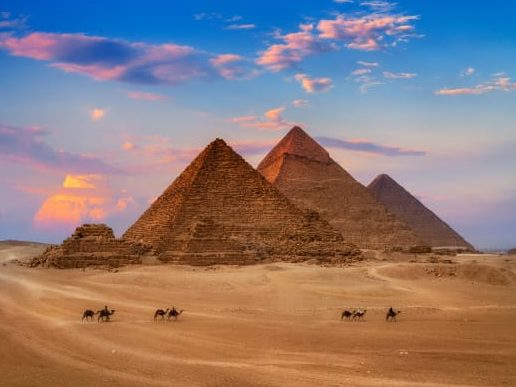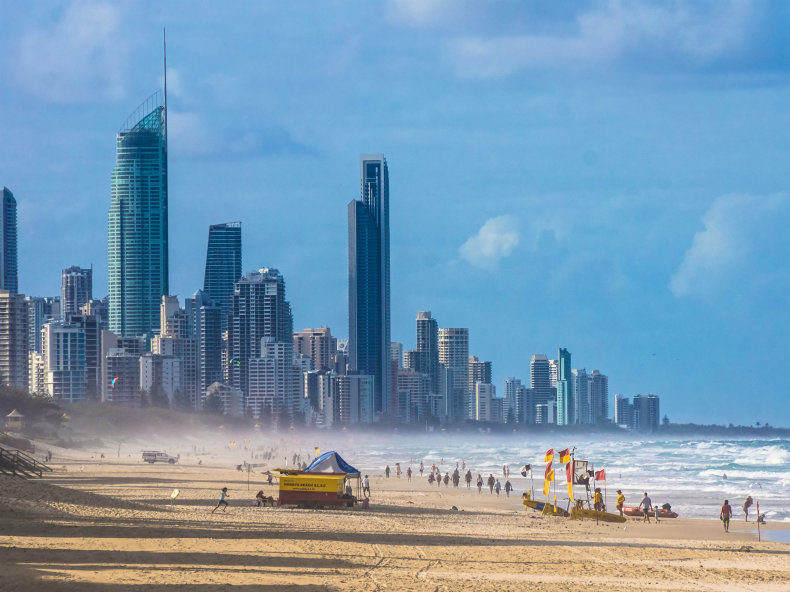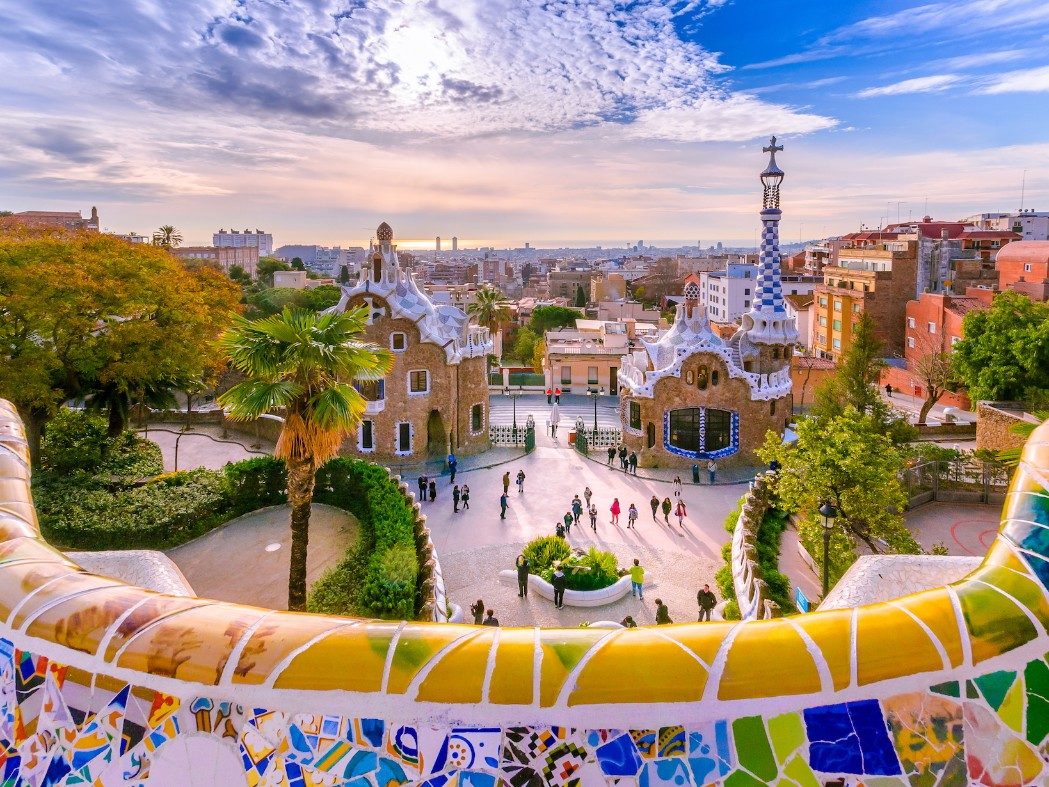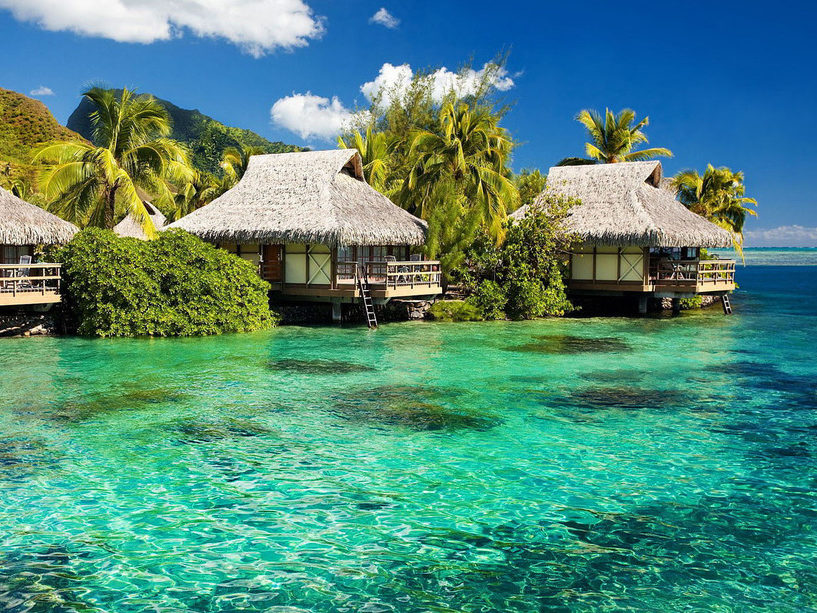Egypt
Egypt is a transcontinental country spanning the northeast corner of Africa and southwest corner of Asia by a land bridge formed by the Sinai Peninsula. It is bordered by the Mediterranean Sea to the north, the Gaza Strip (Palestine) and Israel to the northeast, the Red Sea to the east, Sudan to the south, and Libya to the west. The Gulf of Aqaba in the northeast, whose maximum width is 24 km (15 mi), separates Egypt from Jordan and Saudi Arabia. Cairo is the country’s capital and largest city.
Egypt has one of the longest histories of any country, tracing its heritage along the Nile Delta back to the 6th–4th millennia BCE. Considered a cradle of civilisation, Ancient Egypt saw some of the earliest developments of writing, agriculture, urbanisation, organised religion and central government. Iconic monuments such as the Giza Necropolis and its Great Sphinx, as well the ruins of Memphis, Thebes, Karnak, and the Valley of the Kings, reflect this legacy and remain a significant focus of scientific and popular interest. Egypt’s long and rich cultural heritage is an integral part of its national identity, which reflects its unique transcontinental location being simultaneously Mediterranean, Middle Eastern and North African. Egypt was an early and important centre of Christianity, but was largely Islamised in the seventh century and remains a predominantly Muslim country, albeit with a significant Christian minority.
Modern Egypt dates back to 1922, when it gained independence from the British Empire as a monarchy. Following the 1952 revolution, Egypt declared itself a republic, and in 1958 it merged with Syria to form the United Arab Republic, which dissolved in 1961. Throughout the second half of the 20th century, Egypt endured social and religious strife and political instability, fighting several armed conflicts with Israel in 1948, 1956, 1967 and 1973, and occupying the Gaza Strip intermittently until 1967. In 1978, Egypt signed the Camp David Accords, officially withdrawing from the Gaza Strip and recognising Israel. The country continues to face challenges, from political unrest, including the recent 2011 revolution and its aftermath, to terrorism and economic underdevelopment. Egypt’s current government, a semi-presidential republic led by Abdel Fattah el-Sisi, has been described by a number of watchdogs as authoritarian or heading an authoritarian regime, responsible for perpetuating the country’s problematic human rights record.
Islam is the official religion of Egypt and Arabic is its official language. With over 100 million inhabitants, Egypt is the most populous country in North Africa, the Middle East, and the Arab world, the third-most populous in Africa (after Nigeria and Ethiopia), and the fourteenth-most populous in the world. The great majority of its people live near the banks of the Nile River, an area of about 40,000 square kilometres (15,000 sq mi), where the only arable land is found. The large regions of the Sahara desert, which constitute most of Egypt’s territory, are sparsely inhabited. About half of Egypt’s residents live in urban areas, with most spread across the densely populated centres of greater Cairo, Alexandria and other major cities in the Nile Delta.
Egypt is considered to be a regional power in North Africa, the Middle East and the Muslim world, and a middle power worldwide. It is a developing country, ranking 116th on the Human Development Index. It has a diversified economy, which is the second-largest in Africa, the 33rd-largest economy by nominal GDP, and the 20th-largest globally by PPP. Egypt is a founding member of the United Nations, the Non-Aligned Movement, the Arab League, the African Union, Organisation of Islamic Cooperation and the World Youth Forum.
History
There is evidence of rock carvings along the Nile terraces and in desert oases. In the 10th millennium BCE, a culture of hunter-gatherers and fishers was replaced by a grain-grinding culture. Climate changes or overgrazing around 8000 BCE began to desiccate the pastoral lands of Egypt, forming the Sahara. Early tribal peoples migrated to the Nile River where they developed a settled agricultural economy and more centralised society.
By about 6000 BCE, a Neolithic culture rooted in the Nile Valley. During the Neolithic era, several predynastic cultures developed independently in Upper and Lower Egypt. The Badarian culture and the successor Naqada series are generally regarded as precursors to dynastic Egypt. The earliest known Lower Egyptian site, Merimda, predates the Badarian by about seven hundred years. Contemporaneous Lower Egyptian communities coexisted with their southern counterparts for more than two thousand years, remaining culturally distinct, but maintaining frequent contact through trade. The earliest known evidence of Egyptian hieroglyphic inscriptions appeared during the predynastic period on Naqada III pottery vessels, dated to about 3200 BCE.
A unified kingdom was founded c. 3150 BCE by King Menes, leading to a series of dynasties that ruled Egypt for the next three millennia. Egyptian culture flourished during this long period and remained distinctively Egyptian in its religion, arts, language and customs. The first two ruling dynasties of a unified Egypt set the stage for the Old Kingdom period, c. 2700–2200 BCE, which constructed many pyramids, most notably the Third Dynasty pyramid of Djoser and the Fourth Dynasty Giza pyramids.
The First Intermediate Period ushered in a time of political upheaval for about 150 years. Stronger Nile floods and stabilisation of government, however, brought back renewed prosperity for the country in the Middle Kingdom c. 2040 BCE, reaching a peak during the reign of Pharaoh Amenemhat III. A second period of disunity heralded the arrival of the first foreign ruling dynasty in Egypt, that of the Semitic Hyksos. The Hyksos invaders took over much of Lower Egypt around 1650 BCE and founded a new capital at Avaris. They were driven out by an Upper Egyptian force led by Ahmose I, who founded the Eighteenth Dynasty and relocated the capital from Memphis to Thebes.
The New Kingdom c. 1550–1070 BCE began with the Eighteenth Dynasty, marking the rise of Egypt as an international power that expanded during its greatest extension to an empire as far south as Tombos in Nubia, and included parts of the Levant in the east. This period is noted for some of the most well known Pharaohs, including Hatshepsut, Thutmose III, Akhenaten and his wife Nefertiti, Tutankhamun and Ramesses II. The first historically attested expression of monotheism came during this period as Atenism. Frequent contacts with other nations brought new ideas to the New Kingdom. The country was later invaded and conquered by Libyans, Nubians and Assyrians, but native Egyptians eventually drove them out and regained control of their country.
Climate
Most of Egypt’s rain falls in the winter months. South of Cairo, rainfall averages only around 2 to 5 mm (0.1 to 0.2 in) per year and at intervals of many years. On a very thin strip of the northern coast the rainfall can be as high as 410 mm (16.1 in), mostly between October and March. Snow falls on Sinai’s mountains and some of the north coastal cities such as Damietta, Baltim and Sidi Barrani, and rarely in Alexandria. A very small amount of snow fell on Cairo on 13 December 2013, the first time in many decades. Frost is also known in mid-Sinai and mid-Egypt. Egypt is the driest and the sunniest country in the world, and most of its land surface is desert.
Egypt has an unusually hot, sunny and dry climate. Average high temperatures are high in the north but very to extremely high in the rest of the country during summer. The cooler Mediterranean winds consistently blow over the northern sea coast, which helps to get more moderated temperatures, especially at the height of the summertime. The Khamaseen is a hot, dry wind that originates from the vast deserts in the south and blows in the spring or in the early summer. It brings scorching sand and dust particles, and usually brings daytime temperatures over 40 °C (104 °F) and sometimes over 50 °C (122 °F) in the interior, while the relative humidity can drop to 5% or even less. The absolute highest temperatures in Egypt occur when the Khamaseen blows. The weather is always sunny and clear in Egypt, especially in cities such as Aswan, Luxor and Asyut. It is one of the least cloudy and least rainy regions on Earth.
Prior to the construction of the Aswan Dam, the Nile flooded annually (colloquially The Gift of the Nile) replenishing Egypt’s soil. This gave Egypt a consistent harvest throughout the years.
The potential rise in sea levels due to global warming could threaten Egypt’s densely populated coastal strip and have grave consequences for the country’s economy, agriculture and industry. Combined with growing demographic pressures, a significant rise in sea levels could turn millions of Egyptians into environmental refugees by the end of the 21st century, according to some climate experts.
Tourism
Tourism is one of the most important sectors in Egypt’s economy. More than 12.8 million tourists visited Egypt in 2008, providing revenues of nearly $11 billion. The tourism sector employs about 12% of Egypt’s workforce. Tourism Minister Hisham Zaazou told industry professionals and reporters that tourism generated some $9.4 billion in 2012, a slight increase over the $9 billion seen in 2011.
The Giza Necropolis is one of Egypt’s best-known tourist attractions; it is the only one of the Seven Wonders of the Ancient World still in existence.
Egypt’s beaches on the Mediterranean and the Red Sea, which extend to over 3,000 kilometres (1,900 miles), are also popular tourist destinations; the Gulf of Aqaba beaches, Safaga, Sharm el-Sheikh, Hurghada, Luxor, Dahab, Ras Sidr and Marsa Alam are popular sites.
Transport
Transport in Egypt is centred around Cairo and largely follows the pattern of settlement along the Nile. The main line of the nation’s 40,800-kilometre (25,400 mi) railway network runs from Alexandria to Aswan and is operated by Egyptian National Railways. The vehicle road network has expanded rapidly to over 34,000 km (21,000 mi), consisting of 28 line, 796 stations, 1800 train covering the Nile Valley and Nile Delta, the Mediterranean and Red Sea coasts, the Sinai, and the Western oases.
The Cairo Metro in Egypt is the first of only two full-fledged metro systems in Africa and the Arab World. It is considered one of the most important recent projects in Egypt which cost around 12 billion Egyptian pounds. The system consists of three operational lines with a fourth line expected in the future.
EgyptAir, which is now the country’s flag carrier and largest airline, was founded in 1932 by Egyptian industrialist Talaat Harb, today owned by the Egyptian government. The airline is based at Cairo International Airport, its main hub, operating scheduled passenger and freight services to more than 75 destinations in the Middle East, Europe, Africa, Asia, and the Americas. The Current EgyptAir fleet includes 80 aeroplanes.
Languages
The official language of the Republic is Literary Arabic. The spoken languages are: Egyptian Arabic (68%), Sa’idi Arabic (29%), Eastern Egyptian Bedawi Arabic (1.6%), Sudanese Arabic (0.6%), Domari (0.3%), Nobiin (0.3%), Beja (0.1%), Siwi and others.[citation needed] Additionally, Greek, Armenian and Italian, and more recently, African languages like Amharic and Tigrigna are the main languages of immigrants.
The main foreign languages taught in schools, by order of popularity, are English, French, German and Italian.
Historically Egyptian was spoken, of which the latest stage is Coptic Egyptian. Spoken Coptic was mostly extinct by the 17th century but may have survived in isolated pockets in Upper Egypt as late as the 19th century. It remains in use as the liturgical language of the Coptic Orthodox Church of Alexandria. It forms a separate branch among the family of Afroasiatic languages.
Culture
Egypt is a recognised cultural trend-setter of the Arabic-speaking world. Contemporary Arabic and Middle-Eastern culture is heavily influenced by Egyptian literature, music, film and television. Egypt gained a regional leadership role during the 1950s and 1960s, giving a further enduring boost to the standing of Egyptian culture in the Arabic-speaking world.
Egyptian identity evolved in the span of a long period of occupation to accommodate Islam, Christianity and Judaism; and a new language, Arabic, and its spoken descendant, Egyptian Arabic which is also based on many Ancient Egyptian words.
The work of early 19th century scholar Rifa’a al-Tahtawi renewed interest in Egyptian antiquity and exposed Egyptian society to Enlightenment principles. Tahtawi co-founded with education reformer Ali Mubarak a native Egyptology school that looked for inspiration to medieval Egyptian scholars, such as Suyuti and Maqrizi, who themselves studied the history, language and antiquities of Egypt.
Egypt’s renaissance peaked in the late 19th and early 20th centuries through the work of people like Muhammad Abduh, Ahmed Lutfi el-Sayed, Muhammad Loutfi Goumah, Tawfiq el-Hakim, Louis Awad, Qasim Amin, Salama Moussa, Taha Hussein and Mahmoud Mokhtar. They forged a liberal path for Egypt expressed as a commitment to personal freedom, secularism and faith in science to bring progress.
Festivals
Egypt celebrates many festivals and religious carnivals, also known as mulid. They are usually associated with a particular Coptic or Sufi saint, but are often celebrated by Egyptians irrespective of creed or religion. Ramadan has a special flavour in Egypt, celebrated with sounds, lights (local lanterns known as fawanees) and much flare that many Muslim tourists from the region flock to Egypt to witness during Ramadan.
The ancient spring festival of Sham en Nisim (Coptic: Ϭⲱⲙ‘ⲛⲛⲓⲥⲓⲙ shom en nisim) has been celebrated by Egyptians for thousands of years, typically between the Egyptian months of Paremoude (April) and Pashons (May), following Easter Sunday.
Cuisine
Egyptian cuisine is notably conducive to vegetarian diets, as it relies heavily on legume and vegetable dishes. Although food in Alexandria and the coast of Egypt tends to use a great deal of fish and other seafood, for the most part Egyptian cuisine is based on foods that grow out of the ground. Meat has been very expensive for most Egyptians throughout history, so a great number of vegetarian dishes have been developed.
Some consider kushari (a mixture of rice, lentils, and macaroni) to be the national dish. Fried onions can be also added to kushari. In addition, ful medames (mashed fava beans) is one of the most popular dishes. Fava bean is also used in making falafel (also known as “ta’miya”), which may have originated in Egypt and spread to other parts of the Middle East. Garlic fried with coriander is added to molokhiya, a popular green soup made from finely chopped jute leaves, sometimes with chicken or rabbit.
Categories: Africa
More Lifehack Videos





